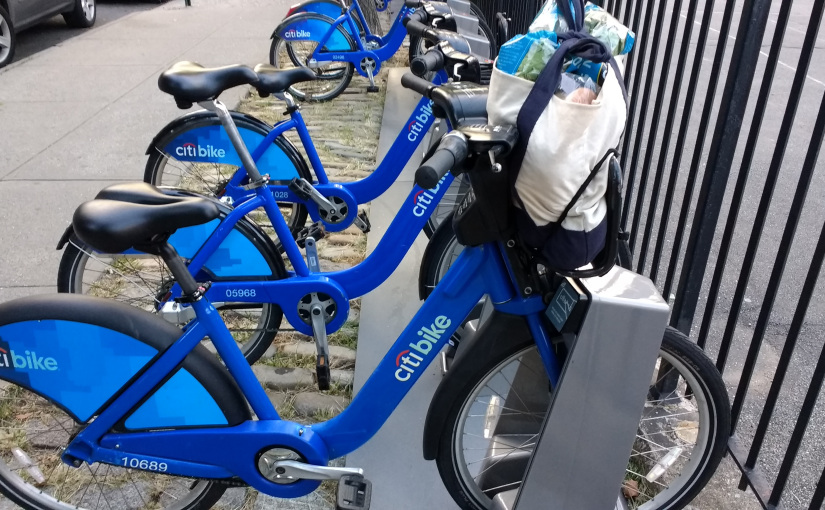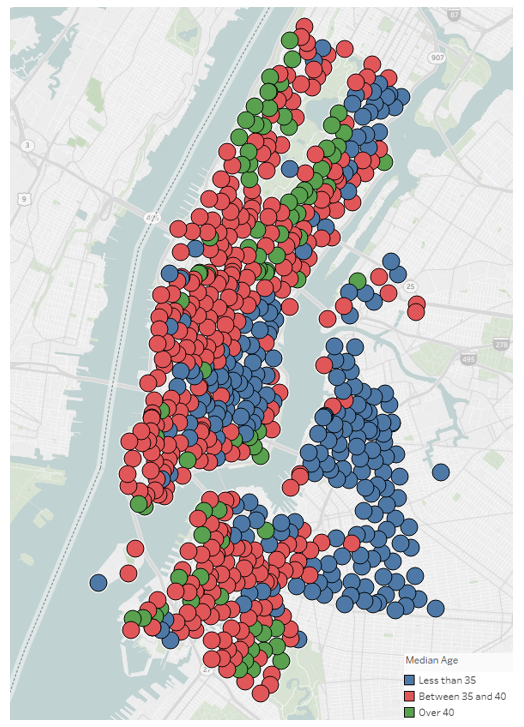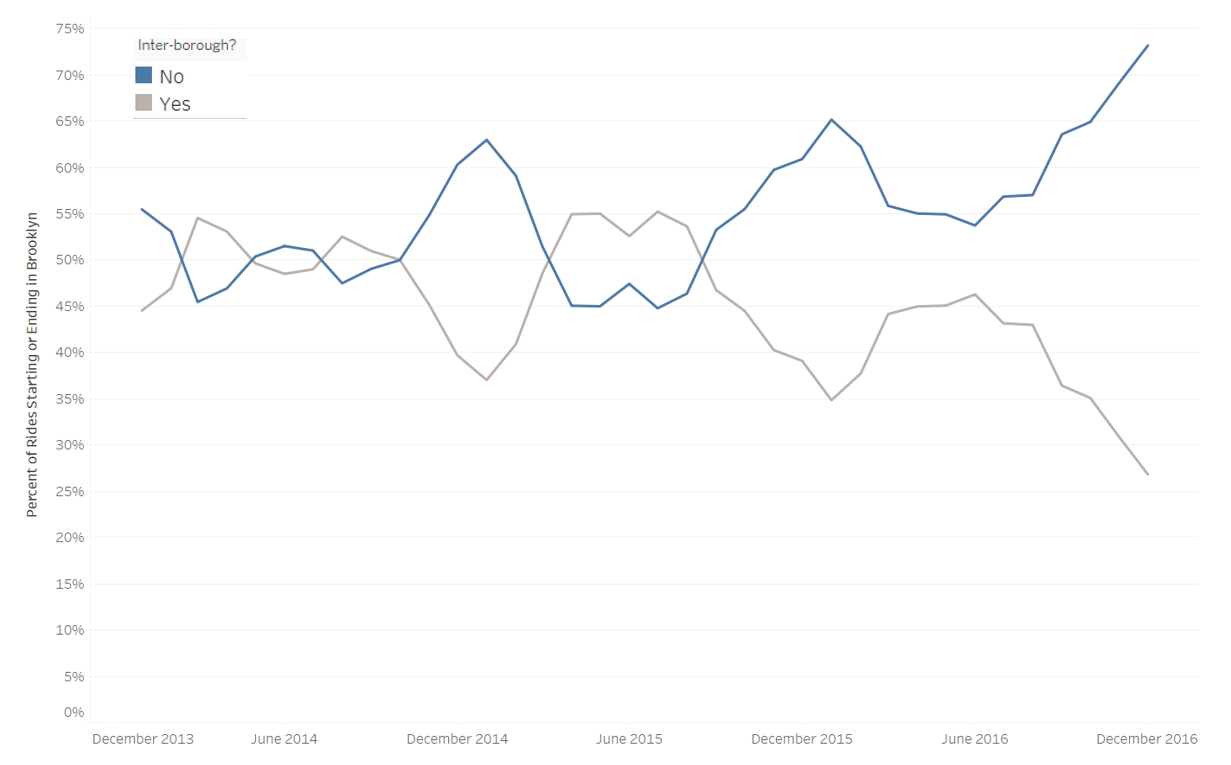
1,000(ish) Miles on a Citibike
I recently hit a big milestone in the life of a Citi Biker:

That’s right, 1K miles in the saddle.
Last spring, I read Charles Montgomery’s Happy City. If you’ve spent any time around me in the past year, you’ve probably heard me talk about it. It’s become my go-to book recommendation for people curious about why they should be interested in urban form. If you haven’t read it, I can’t suggest it highly enough- and for a more in depth review, check out Mr. Money Mustache’s post on it. In Happy City, Montgomery spends a while talking about how much happier human-powered transportation makes people. In particular, he explains that in study after study, it’s been shown that folks who commute by bike are happier, fitter, and more connected to their community.
Well, Happy City got me on a bike, and I haven’t looked back! I figured that this milestone would be a good chance to see what we can learn about cycling in New York from Citi Bike*. Currently, the program receives no public funding. It’s an entirely self-supporting initiative. However, a proposal to subsidize expansion into lower-income areas is picking up steam in city council. What with all the reports coming out showing that cycling is good both for the city (lower pollution, obviously, but cycling also leads to fewer deaths, less congestion for people using all modes, and higher spending at small businesses) and for people biking (who knew? Exercise built into your daily routine is good for you!), it’s becoming clear that cities can reap big benefits from investing in bike infrastructure. In fact, a paper in the BMJ last fall showed that, dollar for dollar, investment in bike lanes in New York City is one of the most cost effective public health interventions available. So it’s no surprise that Ydanis Rodriguez and others in city council are arguing for the expansion of Citi Bike by saying it will improve life for all New Yorkers. This push has only intensified as it’s become clear that New York’s bike share program is literally the most expensive one in the entire world.
But do the data bear the argument out? Are people using the thing? Simply put, yes. The system sees a lot of use.

Of course, much of that growth is due to the expansion of the system further into Brooklyn and Manhattan. However, even if we look just at trips starting and ending within the original boundaries of the program, we see tremendous growth:

So what does this mean? It means that more and more people are using the system, and more riders and rides are being added even in areas that are already covered.
More interesting than how many trips are being taken are the characteristics of who is riding. Across the system, and across time, men far outnumber women, though the percentage of trips taken by women does go up each summer and has grown with time:

The women who do ride, however, tend to be hardier than their male counterparts. Not only are a larger share of their trips inter-borough (4.3% to 4.0%), they also consistently spend more time in the saddle:

How about ages? Unsurprisingly, the median age of riders in the Citi Bike network tend to reflect the ages of residents in neighborhoods (though most riders are in their 30s):

Finally, as a Brooklynite, I was curious about how last summer’s major expansion into more of the borough affected commute times. At the beginning of the summer I expected that, as more people were able to bike near their homes, I would have a tougher time finding a bike at the end of the day. Of all rides starting or ending in Brooklyn, how did the percentage that were inter-borough change?

Prior to 2016, trips starting between 5 and 6 PM that either started or ended in Brooklyn (or both) were nearly as likely to be inter-borough as to be entirely inside of Brooklyn. In fact, in the summers of 2014 and 2015, these evening commute trips were more often between Brooklyn and Manhattan than completely within Brooklyn. However, with the explosion of stations in Brooklyn, a larger share of these commutes were entirely within the borough. And I can relate. That picture at the top of the post? I happily took that after Citi Bike expanded to near the Park Slope Food Coop. I now win all the Brooklyn Points for doing my grocery shopping at the Coop using a Citi Bike, right?
So what does this all mean? The first thing that jumps out to me is the gender disparity. If we agree that cycling is a great way for people to get around the city, we need to understand why so many fewer women are biking than men. Many people have written that it is, among other things, an issue of safety: women are less likely to take a still-risky bike onto city streets. If an expansion of Citi Bike is truly going to help all New Yorkers, we need more than just more stations. We need to invest in improving cycling infrastructure and make it much safer. We need even more protected bike lanes. Though CityLab predicted in 2013 that bike share would end the gender disparity in cycling, it’s clear that it hasn’t been a silver bullet- which shouldn’t really be a surprise.
The second thing I see is the growth in cycling in areas that already had Citi Bike coverage. What does this mean? To my eye, it points to the fact that there are many people willing to try riding a bike, but need a little coaxing. These are the folks that started riding after their neighbors and coworkers took the plunge. After they saw people riding in their neighborhoods, they decided to give it a spin. Clearly, there are many more people even within current Citi Bike coverage areas that we can get onto a bike.
The last thing I see relates most directly to Citi Bike expansion itself. As Citi Bike grew in Brooklyn last summer, not only did more people start taking them within Brooklyn itself, but the average trip length of weeknight commutes dropped by 3 minutes and 42 seconds (14%) between August 2015 and August 2016. These folks are the bread and butter of what Citi Bike is trying to do. My commute between Crown Heights and the Financial District on a Citi Bike is an outlier, and hopefully will remain that way. Citi Bike will succeed best by serving people looking for a quick way to get a few blocks. For these people, the cost of buying and maintaining a bike would be too high to make it worth it. Giving these people an ability to get around via bike without buying their own provides a huge public good- one much larger than the cost of subsidizing the system will be.
Expanding Citi Bike using public funds is a good idea. As we’ve seen, people spend a lot of time using the system. However, if we really want to improve the quality of life in New York by way of the bicycle, we’ll need to do more to address the disparities shown (and those not, like correlations between wealth and cycling) in the Citi Bike data.
But I’ve got to end this love letter with a quick critique (look, Ma, I’m a real New Yorker!). I don’t understand why Citi Bike measures mileage the way that it does. Rather than plugging the start point and the end point into Google maps to figure out how far you rode (or how long the most direct route is), they use the following formula:

The result? My median commute time is 30 minutes and 13 seconds, which means that Citi Bike thinks that my 5.5 mile commute is only 3.75 miles. By that ratio, I passed the 1,000 mile sometime back in November. Whatever.
*Citi Bike posts excellent trip-level data here. I used Stata to scrape and process the data, and the rest of the charts and maps here come from Tableau.